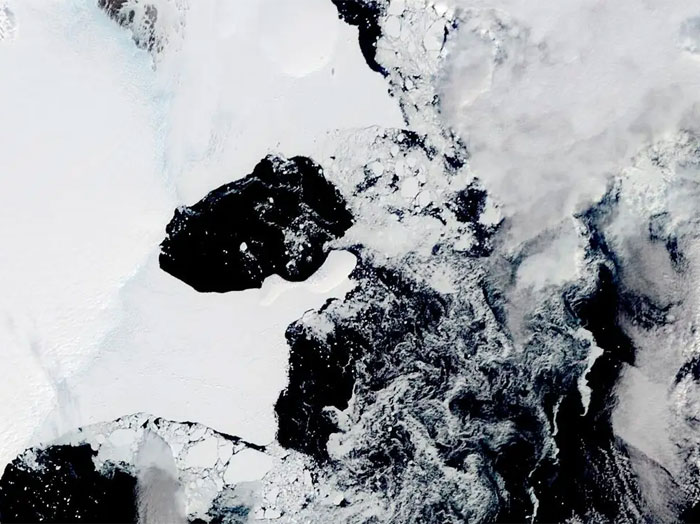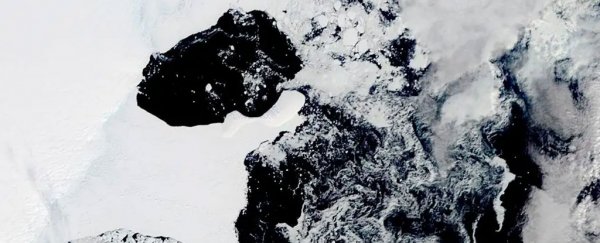An Antarctic ice shelf larger than New York City – in an area previously thought to be stable – has collapsed.
The shelf is relatively small, at 460 square miles, but its unexpected disintegration marks the first time in recorded history that East Antarctica has seen an ice shelf collapse, The Associated Press reported.
"In this part of Antarctica, which is attached to the highest, driest, coldest region, East Antarctica, we really did not anticipate seeing ice-shelf collapse," Peter Neff, a glaciologist at the University of Minnesota, said in a TikTok video on Friday.
The shelf broke apart as temperatures soared in the region last week. It collapsed sometime between March 14 and March 16, according to Catherine Walker, an ice scientist at the Woods Hole Oceanographic Institute.
Complete collapse of East Antarctica's Conger Ice Shelf (~1200 sq. km) ~March 15, seen in combo of #Landsat and #MODIS imagery. Possible it hit its tipping point following the #Antarctic #AtmosphericRiver and heatwave too? #CongerIceShelf #Antarctica
— Catherine Colello Walker (@CapComCatWalk) March 24, 2022
@helenafricker @icy_pete https://t.co/7dP5d6isvd pic.twitter.com/1wzmuOwdQn
That was just a few days before a research station on the Antarctic plateau registered temperatures 70 degrees Fahrenheit above average. A long column of water vapor, called an atmospheric river, had carried heat from the tropics to the ice continent. At the same time, a high-pressure system called a "heat dome" moved in and sat over East Antarctic, trapping heat and moisture there, according to The Washington Post.
"The heatwave was likely "the last straw on the camel's back," Walker told the AP.
"We probably are seeing the result of a lot of long-time increased ocean warming there," she said, adding, "It's just been melting and melting."
Global temperatures are rising as humans add more heat-trapping gases like carbon dioxide to the atmosphere, and the poles are warming faster than the rest of the planet.
Even before the heatwave, Antarctica was at its lowest sea ice coverage since records began, The Guardian reported in February.
 (NASA/AP)
(NASA/AP)
This ice shelf had been slowly shrinking since the 1970s, and its melt sped up in 2020, so that its size was halved roughly every month, according to the AP. The shelf previously stood between two glaciers, called Conger and Glenzer, and warming ocean waters.
The concerning collapse shows that even areas scientists thought were safe from the effects of the climate crisis are not so unaffected after all.
"The Glenzer Conger ice shelf presumably had been there for thousands of years and it's not ever going to be there again," Neff told the AP.
This article was originally published by Business Insider.
More from Business Insider:
